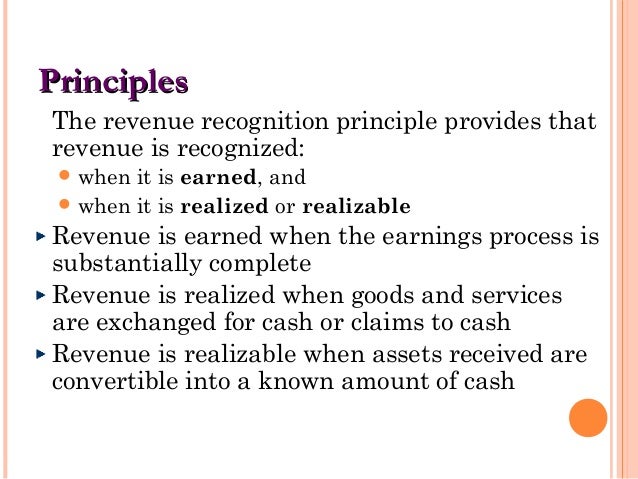
IFRS does, however, permit revenue recognition after delivery. When revenue is recognized, according to the matching principle, expenses must also be considered for:ĬR Inventory b Revenue Recognition Before and After Deliveryįor the sale of goods, IFRS standards do not permit revenue recognition prior to delivery. Revenue recognition at delivery will look like this: An example of this may include Whole Foods recognizing revenue upon the sale of groceries to customers. This is because, at the time of delivery, all five criteria are met.
#Revenue recognition principle free#
To learn more, launch our free accounting courses! Revenue Recognition for the Sale of Goodsįor the sale of goods, most of the time, revenue is recognized upon delivery. The costs incurred can be reasonably measured.

Collection of payment is reasonably assured.

The amount of revenue can be reasonably measured.The seller loses continuing managerial involvement or control of the goods sold.There is a transfer of the risks and rewards of ownership.Revenue Recognition CriteriaĪccording to IFRS standards, all of the following five conditions must be met for a company to recognize revenue: Understanding the revenue recognition principle is important in analyzing financial statements. In fact, it is estimated that a significant portion of all accounting fraud stems from revenue recognition issues, given the amount of judgment involved. In accounting, revenue recognition is one of the areas that is most susceptible to manipulation and bias. Generally speaking, the earlier revenue is recognized, it is said to be more valuable to the company, yet a risk to reliability. Theoretically, there are multiple points in time at which revenue could be recognized by companies. The revenue recognition principle dictates the process and timing by which revenue is recorded and recognized as an item in a company’s financial statements. Updated MaWhat is the Revenue Recognition Principle?


 0 kommentar(er)
0 kommentar(er)
